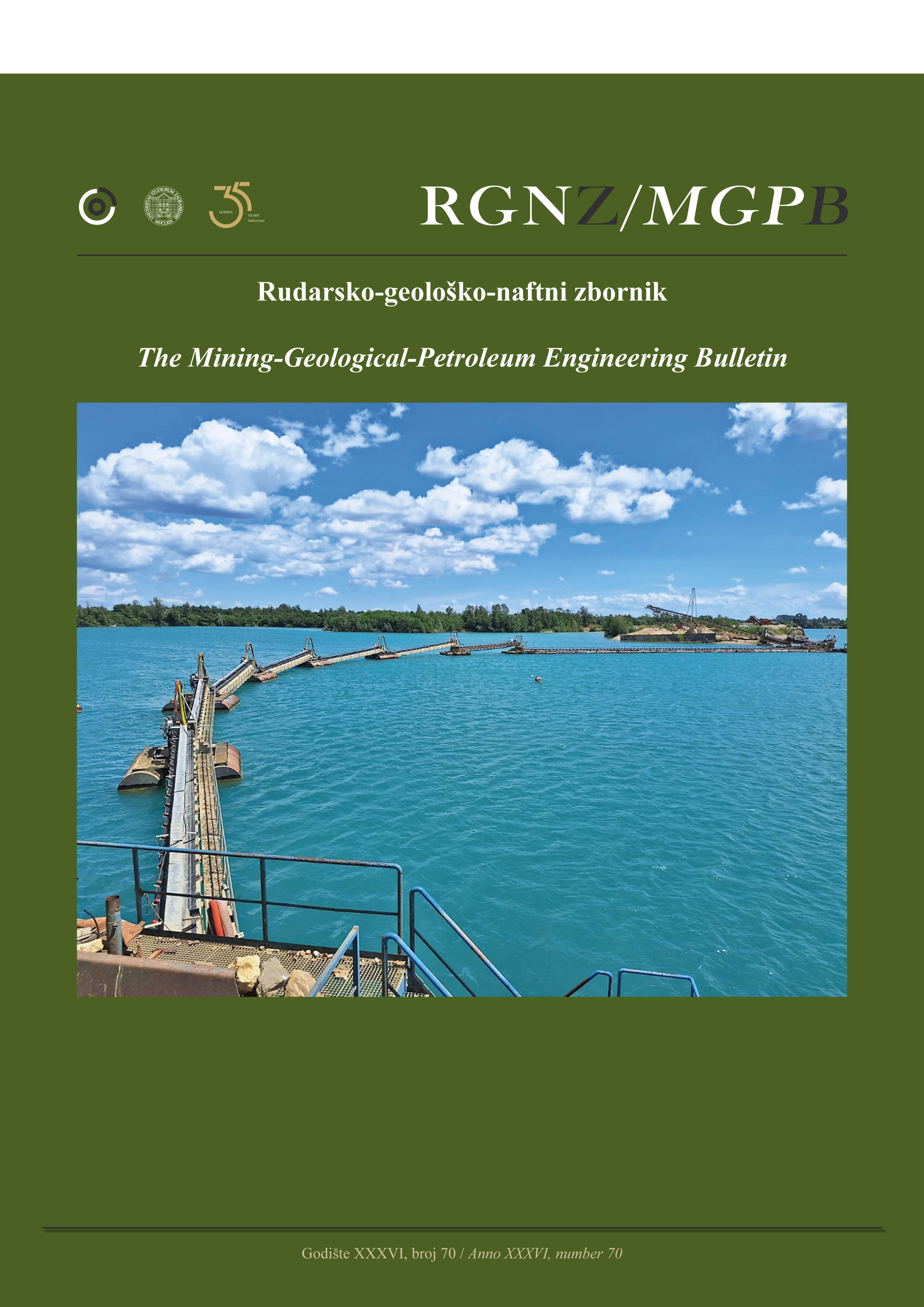Pressure build-up test analyses of a hydraulically fractured well with reduced half-length
DOI:
https://doi.org/10.17794/rgn.2024.4.7Keywords:
pressure build-up test, fracture half-length, refracturing processAbstract
When the oil production of the hydraulically fractured well A-1 began to decline, a refracturing of the well was planned, as a reduction in the fracture size was assumed after a long production period. Several possibilities of the pressure build-up test analyses were performed to determine the best evaluation of the reduced fracture half-length. Although the objectives of these tests are to determine the reservoir properties, such as rock permeability and skin factor, as well as fracture conductivity, the Saphir programme is also used to model the fracture half-length. This is the most important parameter required for the design of the new fracturing process and for the creation of a new production model. For this purpose, the methods of the pressure build-up test analysis are first described theoretically. Based on different analyses of the same pressure build-up test, the one that best matches the analytical model of a fractured well with the measured pressure curve and the derivative curve is selected. It is found that the most accurate result for fracture half-length is obtained from the fractured well model with multiphase flow.
Downloads
Published
How to Cite
Issue
Section
License
Copyright (c) 2024 Sonja Koščak Kolin, Andrea Valjak, Vladislav Brkić, Sonja Buti Njie

This work is licensed under a Creative Commons Attribution 4.0 International License.
Creative Commons-BY
Authors who publish with this journal agree to the following terms:
In agreeing this form, you certify that:
- You read the ethical codex of the RGN zbornik available at journal web.
- You submitted work is your original work, and has not previously been published and does not include any form of plagiarism.
- You own copyright in the submitted work, and are therefore permitted to assign the licence to publish to RGN zbornik.
- Your submitted work contains no violation of any existing copyright or other third party right or any material of an obscene, libellous or otherwise unlawful nature.
- You have obtained permission for and acknowledged the source of any illustrations, diagrams or other material included in the work of which you are not the copyright owner.
- You have taken due care to ensure the accuracy of the work, and that, to the best of your knowledge, there are no false statements made within it.
- All co-authors of this submitted work are aware of, and in agreement with, the terms of this licence and that the submitted manuscript has been approved by these authors.
Publication licence
You retain copyright in your submitted work, according to journal license policy (CC-BY). By signing this form you agree that RGN zbornik may publish it under the publication licence. In summary the licence allows the following:
Anyone is free:
- To copy, distribute, display, and perform the work.
- To make derivative works.
Under the following conditions:
- The original author must always be given credit.
- The work may not be used for commercial purposes.
- If the work is altered, transformed, or built upon, the resulting work may only be distributed under a licence identical to this one.
Exceptions to the licence
In addition to publishing the work printed under the above licence, RGN zbornik will also enable the work to be visible online.
The journal editorial can change the licence rules anytime but it cannot retroactively restrict author(s) rights.


